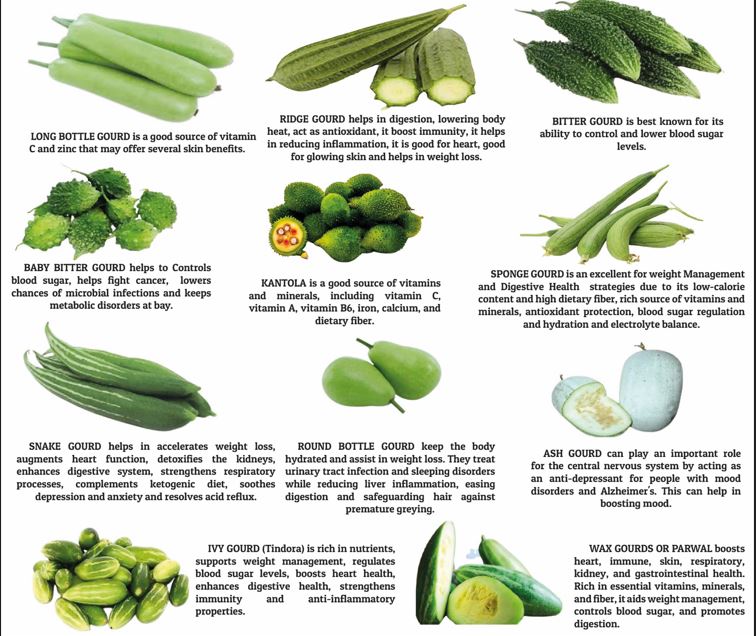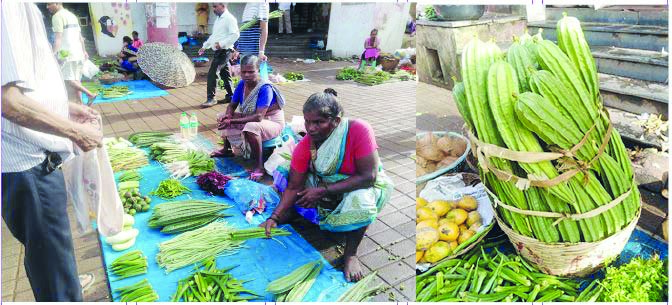Goa is abuzz with excitement as vintage bike and car owners, users, collectors and fans are decking […]

LOOK AT THE WORLD OF GOURDS THIS MONSOON!
Aug 03- Aug 09 2024, Eating is Fun / Eating is Yuck! - A variety food column, Life & Living August 2, 2024By Tara Narayan
MONSOON time most Hindus fast for piety and not for losing weight but if you eat gourds throughout Shravan-ka-mahina chances are you will get back into fighting fit shape faster and better than ever before. For the veggies of the gourd family are mostly lightweight veggies rich in nutrient values, some you may steam cook lightly and season for minimal exquisite flavors…or just turn into a relish to go you’re your one meal of the day, or however you are fasting for love of life or whatever else. Our reasons for fasting are varied and fascinating!
As fascinating as the world of gourds…one of my early morning visits to the Panaji pavement market revealed a real harvest of gourds, as it is so every rainy month of July during the monsoon season.
There’re the familiar half-a-dozen favorites like the slender tender bottle gourds of lauki or dudhi, the bitter gourds of karela which are a connoisseur’s as well as a diabetes patient’s delight, the slender ivy gourd “tindora” (like baby cucumbers), freshly arrived wax gourds or pointed gourds called parwal are also a monsoon special – these the Bengali community favor for their Durga puja bhog feast for Durga-maa, served either masala-stuffed or stir fried in a tempering of “panch phoran” spices.
Come Shravan-ka-mahina and it’s a wonder world of gourds, one should really do nothing but discover all the gourds in the market or in the wild. If one is fasting or doing intermittent fasting the gourds are classy veggies offering first class nutrition, fiber, various vitamin values, anti-inflationary properties…you want to take a shine to the gourds. Most are bland but some like the ivy gourds may be tangy a wee bit.
Most of us stick to the most popular bottle gourds while others take to ridged gourds “turai,” snake gourds “padwal” or “chichinda,” spiny gourds “kantola,” pointed gourds “parwal.” The gourds are native to India or South Asia, Africa and the Americas too. All are relatives of the Cucurbitaceae family of gourds and also include water melons, cucumbers, squashes, pumpkins…“cucurbits” in short if you like.
Just to give you an idea of the Cucurbitaceae family of gourds it has 100 genera and over 700 species of gourds! It’s easy to be fascinated by the gourd family for they come in such eye-catching varied shapes and color schemes, some are thin-skinned and some thick skinned enough to be dried out into lanterns or various eco-friendly containers and much else (offering an array of craftwork).
The long sponge gourd is so rich in fiber it can double into kitchen clean-up utility value item numbers — you have to learn how to dry them off properly, they’re quite hardy in usage. Can use them as bath sponges too, they’re available at most home exhibitions or eco-friendly stores.
SOME say the “queen of all gourds” is the ash gourd or “petha” (Beninasa Hispida), these heavyweight whitish oval gourds go into the making of the much in demand cooling summer sweet of summer time up north, called “petha safed” or “petha angoori” — a most sensual sweet to take pleasure in. Ash gourd has a most impressive health brief, drink its fresh juice in small portion cocktail shots, or steam cook into relish, raita or soup. Heat will always destroy delicate enzyme values.

The pointed gourds of “parwal” are rated as “king of gourds” for they offer higher nutrients than the other cucurbits. Say ash gourd petha and pointed gourd parwal are the royal couple of the Cucurbitaceae family of gourds!
Come Chrovoth or Ganesh Chaturthi you will see the less familiar gourds in the form of pumpkins – various bottle shapes from short and stout to two-tiered “calabash” squash. Be very careful when cutting off the thick hard rinds of some of the gourds (like the butternut squash) or you may cut off a finger! Some gourds are hardy and can be pretty tough outside, if gorgeously radiant within…from pale sunshine yellow to peachy blush to cloudy white, really lovely. Some pumpkins store very through the rainy months and are treated as a blessed grace in the kitchen — to fall back on when there are no other veggies or they are scarce.
Some gourds like the zucchini (Cucurbita pepo) are eaten raw in crunchy salads. Most cucurbits are vine veggies/fruit and the ivy gourds grow prettily on trellis stacks…as also bottle gourds, bitter gourds, cucumbers are so plentiful in Goa come the monsoon season. Local tradition perceives the many-seeded cucumber as a fertility veggie offering at the St Anne’s church in…. and during this feast many couples turn up to pray for divine help in conceiving family. Baskets of cucumbers are offered at the church. You will find cucumbers in every Goan home come the monsoon months be it Catholic homes or Hindu homes. There are various kinds of cucumbers from the delicate pale creamy ivory ones to the rich fat colored ones which go into making steamed “tavsali” cake in GBS kitchens. Various melons, cucumbers, squashes and pumpkins are seen as siblings of the gourd family.
This is to say if it is July you must take a first or second or forever after look at the gourds in the Goan market and make the most of them!















